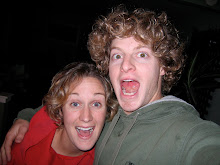A camping stove. It is a must-have item for living outdoors. It cooks our food, it makes us hot drinks to warm us up on cold, rainy days, it boils water for drinking, it keeps us alive without having to do all of those tasks over an open fire which would be way too time consuming.
We started in the U.S. With an MSR Dragonfly. Though an obnoxiously loud stove, it was small, efficient and ran on both white gas and regular unleaded gasoline. We would have loved to bring it to South America with us, but of course we aren't allowed to take stoves on airplanes. You can always try to hide it, but if it's discovered, not only do you end up at your destination without a stove, but you also permanently lose your possession to the ever-multiplying collection of items confiscated by the TSA. And good camp stoves are not cheap so we sent ours home and painstakingly searched for another one once we arrived in Ecuador.
The second stove of our bike tour was the Coleman Exponent 442. Though it didn't pack down nicely, it was pleasantly quiet and also ran on gasoline which was a huge plus for us down here because it's inexpensive, readily available and we never had to worry about finding propane fuel canisters which are very costly.
However, there's also a downside to using gasoline. It's a dirty form of fuel and over time it tends to clog the stove. Ours decided to crap out on us much sooner than we expected. After 2 months of use there's already corroding parts and Mike's disassembled and cleaned the thing a dozen times to no avail. It's infuriating how these items are outrageously expensive, are marketed to work with 2 types of fuel yet really designed to only function properly for extended periods of time with one of those fuels. Then when it breaks on you, it's impossible to fix and you're left out on the road or in the mountains without a stove.
Today we went searching for yet another stove to last us for our next 2 ½ months in South America but didn't find what we were looking for nor were we thrilled on the idea of wasting another $150 on a stove that we'd have to dispose of when we were ready to fly out of here. Our solution was to make an alcohol burning stove that was so simple it couldn't break on us.
Mike had a blast with this project. We went to a pharmacy and bought a bottle of rubbing alcohol (our new fuel). Then we stopped at the grocery store and bought a huge canister of dry milk, a can of tuna, a can of peas and 4 beers. Mike was pleased that today's beers got to go under the “essential supplies” column in our budget instead of the “food” column. The only other things we needed were some copper wire, which Mike found laying on the sidewalk and some bolts and a few other tools, all of which we had in our spare parts bag.
We dumped the dry milk in the trash because that stuff is gross, but the large can was needed to provide a solid base for the stove and to hold our large cooking pots. A shorter can would have been ideal but this was all we could find. Vents were cut in the can and then set aside.
The base.
The pea can was needed to build a pedestal to hold the burner. This was only essential because we used the large milk can and could have been omitted had we found something shorter. Mike attached the pea can inside the bottom of the milk can with copper wire.
The very bottom couple of millimeters was all that was needed of the tuna can. This piece became the preheating tray which holds the burner as well as a tiny bit of alcohol that gets lit to heat up the alcohol inside the burner. Mike attached the preheating tray to the pea can with a non-essential screw from the TV stand in our hotel room because we didn't have one in our tool bag.
Looking down at the pedestal and preheating tray.
The final part to the stove was the burner which was made out of the bottoms of 2 aluminum cans. One can was cut about 1 ¼ inches from the bottom and the other about ¾ of an inch. With a sewing needle, Mike poked 16 evenly spaced holes around the beveled edge of the can, which is where the flames will come out, and with a drill bit, a larger hole in the center of the can which will be the filling hole. He then carefully fit together the 2 bottoms of the cans making sure not to dent them, filled the burner with alcohol and inserted a bolt into the filling hole. Since it's impossible to regulate the flame with this type of stove, he also made a burner with only 8 holes so we have the option of both a high or low flame.
The burners.
All of our trials throughout the day have been a huge success – we've cooked on it, boiled water and are pleased with the outcome. Now the major test will be to see how it performs in the never-ending winds of Patagonia. We now have a stove that is light but kind of large, quiet, we can take on airplanes, looks ridiculously awesome, is unlikely to break, but if it does is easily repairable and only cost us about $12. Beat that all you big camp stove manufacturers!
Our awesome new alcohol burning camp stove at work.































